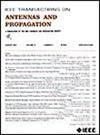A Simultaneous Time-Domain Measurement Method for Electric and Magnetic Fields Within the Test Chamber of Radiated Immunity
IF 4.6
1区 计算机科学
Q1 ENGINEERING, ELECTRICAL & ELECTRONIC
引用次数: 0
Abstract
This article presents a novel time-domain method for simultaneously characterizing electric and magnetic fields of test chambers in integrated circuit radiation immunity tests. The proposed approach is based on a symmetric vertical crossed-loop antenna (SCLA) and involves both a frequency-domain calibration process and a time-domain reconstruction process. Unlike the traditional single electric or magnetic field antenna characterization methods in IEC 62132-8, this method can simultaneously induce all three fields required during the radiation immunity test, namely,辐射抗扰度试验室内电磁场时域同步测量方法
本文提出了一种时域同时表征集成电路辐射抗扰度试验箱电场和磁场的新方法。该方法基于对称垂直交叉环天线(SCLA),包括频域校准过程和时域重建过程。与IEC 62132-8中传统的单电场或磁场天线表征方法不同,该方法可以同时感应辐射抗扰试验所需的三个场,即$H_{\ mathm {x}}$、$H_{\ mathm {y}}$和$E_{\ mathm {z}}$。频域校准过程将原始感应电场和h场信号与混叠的测量端口电压信号解耦。时域重构过程从原始感应电场和h场信号中重构出$H_{\mathrm {x}}$、$H_{\mathrm {y}}$和$E_{\mathrm {z}}$的时域波形。分析和讨论了该方法的校准有效性、精度、鲁棒性和频率范围。最后,通过三种典型的电磁场波形,包括正弦信号、脉冲调制正弦信号和双指数强脉冲信号,验证了该方法的有效性。
本文章由计算机程序翻译,如有差异,请以英文原文为准。
求助全文
约1分钟内获得全文
求助全文
来源期刊
CiteScore
10.40
自引率
28.10%
发文量
968
审稿时长
4.7 months
期刊介绍:
IEEE Transactions on Antennas and Propagation includes theoretical and experimental advances in antennas, including design and development, and in the propagation of electromagnetic waves, including scattering, diffraction, and interaction with continuous media; and applications pertaining to antennas and propagation, such as remote sensing, applied optics, and millimeter and submillimeter wave techniques

 求助内容:
求助内容: 应助结果提醒方式:
应助结果提醒方式:


